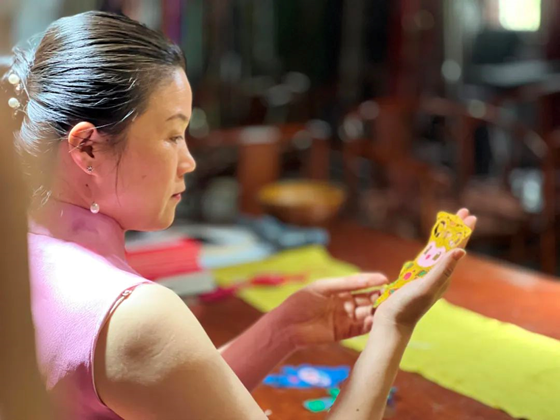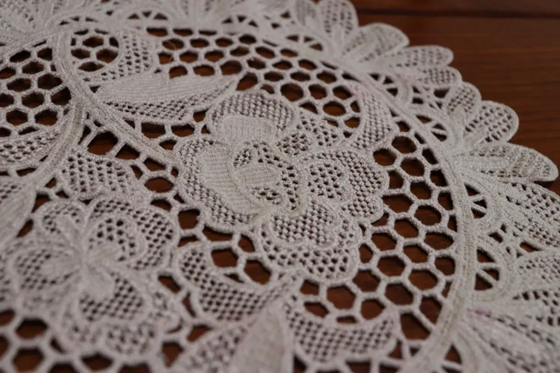Lacework recalls Hangzhou Asian Games

Wang Lihua holds a threaded Congcong, a mascot of the Hangzhou Asian Games, in Xiaoshan district. [Photo/hangzhou2022.cn]
In Xiaoshan district, Hangzhou, lacework is used to make daily articles such as bedspreads, tea table cushions, and sofa covers, and the art form is continuing to evolve.
For example, Wang Lihua recently made some lacework art echoing the Hangzhou Asian Games.
Inspired by the Hangzhou Asian Games mascots, Wang blended a variety of colored threads and needlework into the new handicrafts to bring out the spirit of the mascots.
"We learn the craft from professional artists and continue sharpening our skills while also integrating our laceworks with modern fashion trends and using bolder colors," Wang said.
Dubbed the hometown of Chinese lace, Xiaoshan women were first exposed to lace weaving in the early 20th century, as they were good at growing cotton, weaving silk, rearing silkworm and reeling silk, and were known for their intelligence and dexterous hands.
A Shanghai businessman named Xu Fangqin hence opened the first lace factory in Xiaoshan, called George Lace Factory. Since then, Xiaoshan lace factories have boomed and Xiaoshan Lace has become famous. Xiaoshan Lace is known for its delicate designs, exquisite patterns and fine embroidering techniques and its products are sold at home and overseas.

A traditional Xiaoshan lacework. [Photo/hangzhou2022.cn]
-
Visionary Pathway - Hangzhou Playbook
July 15, 2025



